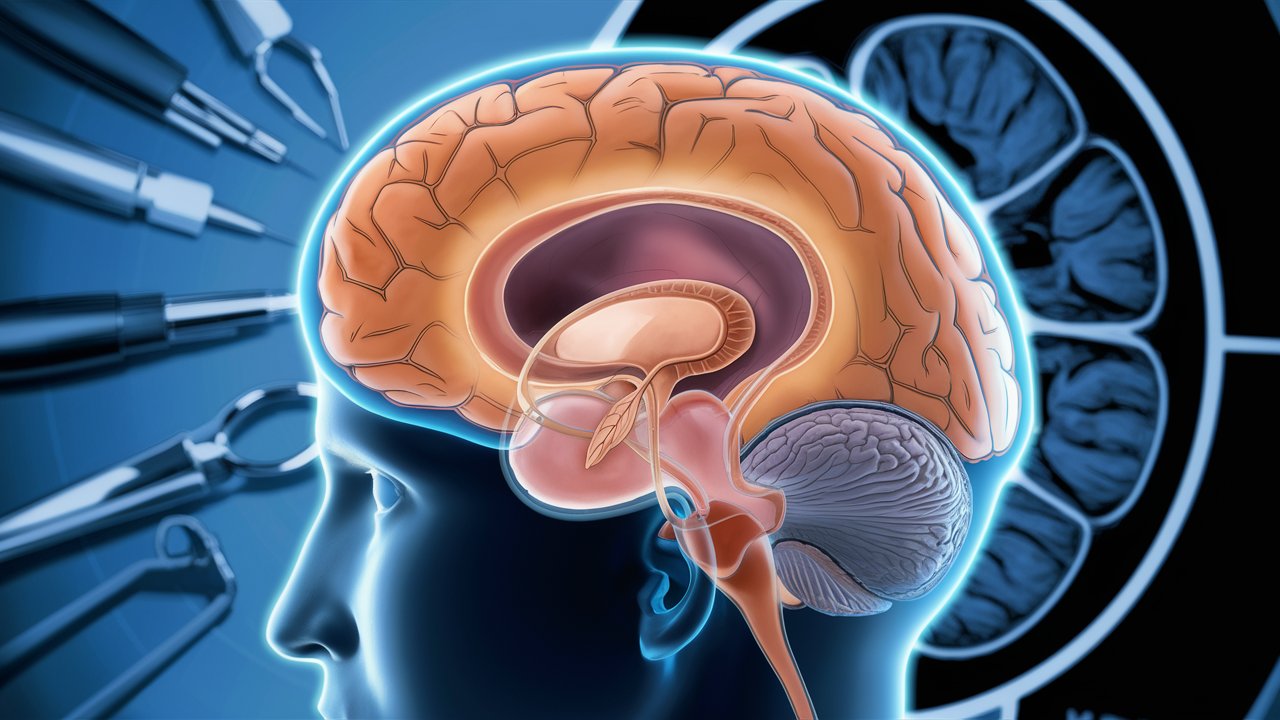
Ever heard of Empty Sella Syndrome (ESS)? This rare condition involves a small, flattened pituitary gland, which sits in a bony structure called the sella turcica. But what does that mean for you? Often, people with ESS don't even know they have it because symptoms can be mild or nonexistent. However, some might experience headaches, vision problems, or hormonal imbalances. Why should you care? Understanding ESS can help you recognize potential signs and seek appropriate medical advice. Curious about more details? Let's dive into 30 intriguing facts about Empty Sella Syndrome that will shed light on this mysterious condition.
What is Empty Sella Syndrome?
Empty Sella Syndrome (ESS) is a condition where the sella turcica, a bony structure at the base of the brain that houses the pituitary gland, appears empty. This can happen due to various reasons, including a defect in the diaphragm sellae or increased intracranial pressure. Here are some intriguing facts about this condition:
-
Primary vs. Secondary: ESS can be classified into two types: primary and secondary. Primary ESS occurs when a small anatomical defect allows cerebrospinal fluid to enter the sella turcica, compressing the pituitary gland. Secondary ESS happens due to injury, surgery, or radiation therapy affecting the pituitary gland.
-
Pituitary Function: Despite the sella turcica appearing empty, the pituitary gland often continues to function normally. This means many individuals with ESS may not experience any symptoms.
-
Incidental Finding: ESS is frequently discovered incidentally during imaging tests for other conditions. Many people with ESS are asymptomatic and may never know they have it.
-
Symptoms: When symptoms do occur, they can include headaches, vision problems, and hormonal imbalances. These symptoms arise due to the pressure on surrounding structures or pituitary dysfunction.
-
Hormonal Imbalance: ESS can lead to hormonal imbalances, including deficiencies in growth hormone, thyroid-stimulating hormone, and adrenal hormones. This can result in fatigue, weight gain, and other metabolic issues.
-
Prevalence: ESS is relatively rare, affecting about 8-35% of the general population. It is more common in women, particularly those who are obese or have high blood pressure.
-
Diagnosis: Magnetic Resonance Imaging (MRI) is the most effective tool for diagnosing ESS. It provides detailed images of the sella turcica and pituitary gland.
-
Treatment: Treatment for ESS depends on the symptoms. If hormonal imbalances are present, hormone replacement therapy may be necessary. Headaches and vision problems are managed symptomatically.
-
Associated Conditions: ESS can be associated with other conditions such as pseudotumor cerebri, a condition characterized by increased intracranial pressure without a detectable cause.
-
Surgical History: Individuals who have undergone pituitary surgery or radiation therapy are at higher risk for developing secondary ESS.
Causes and Risk Factors
Understanding the causes and risk factors of ESS can help in early detection and management. Here are some key points:
-
Congenital Defects: Some people are born with a defect in the diaphragm sellae, which can lead to primary ESS.
-
Obesity: Obesity is a significant risk factor for primary ESS. Increased intracranial pressure associated with obesity can push cerebrospinal fluid into the sella turcica.
-
High Blood Pressure: Hypertension can contribute to the development of ESS by increasing intracranial pressure.
-
Hormonal Changes: Hormonal changes, particularly in women, can influence the development of ESS. This includes changes during pregnancy and menopause.
-
Trauma: Head trauma can lead to secondary ESS by damaging the pituitary gland or its surrounding structures.
-
Radiation Therapy: Radiation therapy for brain tumors can damage the pituitary gland, leading to secondary ESS.
-
Pituitary Tumors: Tumors in the pituitary gland can cause secondary ESS by compressing or destroying pituitary tissue.
-
Autoimmune Disorders: Autoimmune conditions like lymphocytic hypophysitis can lead to inflammation and damage to the pituitary gland, resulting in ESS.
-
Infections: Severe infections affecting the brain or pituitary gland can cause secondary ESS.
-
Genetic Factors: There may be a genetic predisposition to developing ESS, although more research is needed to confirm this.
Impact on Daily Life
Living with ESS can vary greatly from person to person. Here are some ways it can impact daily life:
-
Fatigue: Hormonal imbalances caused by ESS can lead to chronic fatigue, affecting daily activities and overall quality of life.
-
Vision Problems: Pressure on the optic chiasm can cause vision issues, including double vision or loss of peripheral vision.
-
Headaches: Frequent headaches are a common symptom, which can be debilitating and affect concentration and productivity.
-
Emotional Health: Hormonal imbalances can also impact emotional health, leading to mood swings, depression, or anxiety.
-
Weight Management: Hormonal deficiencies can make weight management challenging, contributing to obesity and related health issues.
-
Bone Health: Deficiencies in certain hormones, like growth hormone, can affect bone density, increasing the risk of osteoporosis.
-
Reproductive Health: ESS can affect reproductive hormones, leading to menstrual irregularities in women and reduced libido in both men and women.
-
Sleep Disturbances: Hormonal imbalances can disrupt sleep patterns, leading to insomnia or poor-quality sleep.
-
Cognitive Function: Some individuals may experience cognitive issues, such as memory problems or difficulty concentrating.
-
Social Life: The symptoms of ESS can impact social interactions and relationships, as individuals may feel too fatigued or unwell to engage in social activities.
Final Thoughts on Empty Sella Syndrome
Empty Sella Syndrome (ESS) might sound intimidating, but understanding it helps ease concerns. This condition involves the sella turcica, a bony structure in the skull, appearing empty on imaging scans. However, the pituitary gland is usually present, just flattened. ESS can be primary, occurring without a known cause, or secondary, resulting from surgery, radiation, or other factors.
Symptoms vary widely. Some people experience headaches, vision problems, or hormonal imbalances, while others have no symptoms at all. Diagnosis often involves MRI or CT scans, and treatment depends on the symptoms. Hormone replacement therapy might be necessary for those with hormonal deficiencies.
Awareness and proper medical guidance are key. If you or someone you know has been diagnosed with ESS, consult a healthcare professional for personalized advice. Knowledge empowers, and with the right information, managing ESS becomes less daunting.
Was this page helpful?
Our commitment to delivering trustworthy and engaging content is at the heart of what we do. Each fact on our site is contributed by real users like you, bringing a wealth of diverse insights and information. To ensure the highest standards of accuracy and reliability, our dedicated editors meticulously review each submission. This process guarantees that the facts we share are not only fascinating but also credible. Trust in our commitment to quality and authenticity as you explore and learn with us.


